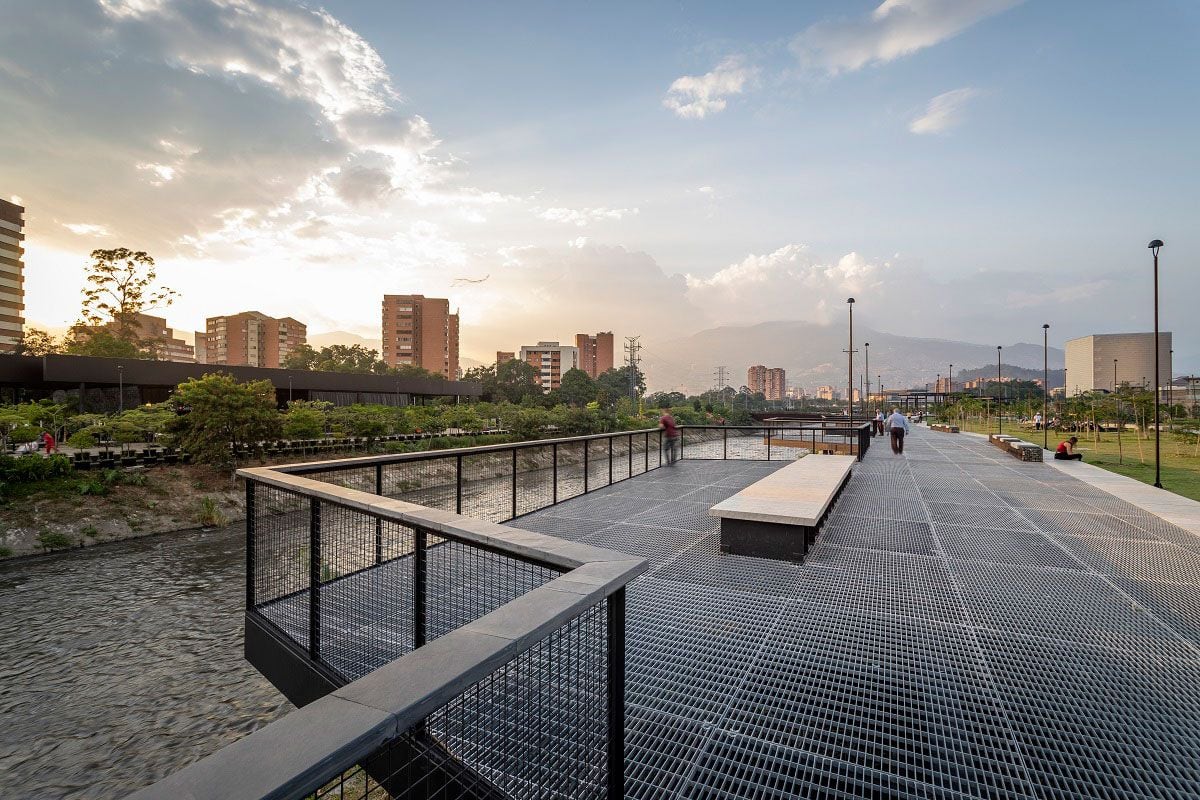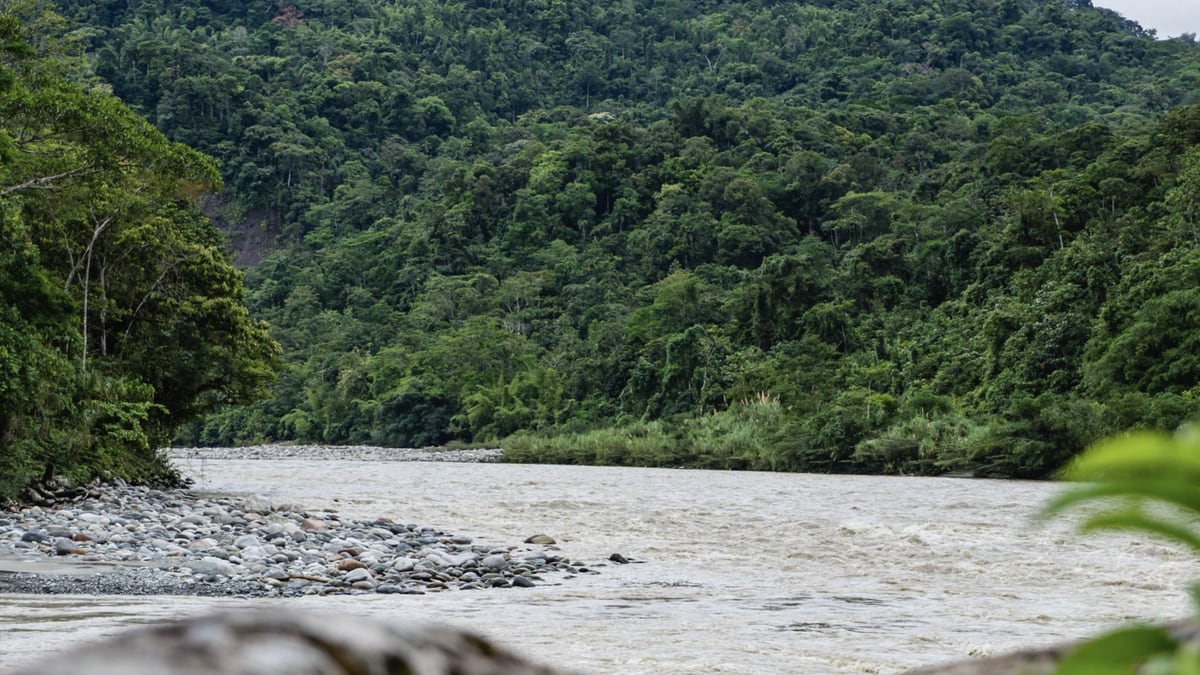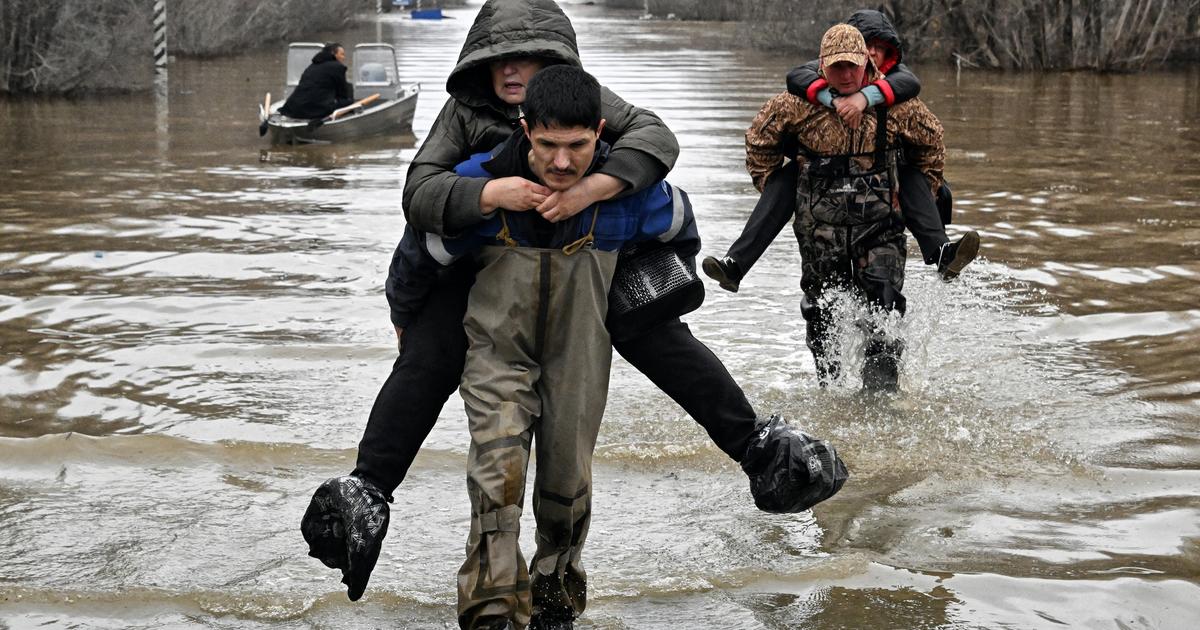A rehabilitated river in the Colombian city of Medellín.Mauricio Carvajal (Courtesy)
EL PAÍS offers the América Futura section for its daily and global informative contribution on sustainable development. If you want to support our journalism, subscribe here.
"If you take away the river, you take away a fundamental part of my life. And you take it away from my city too." It's a Saturday evening in Cuenca, Ecuador, and Adriana Carrasco sips coffee from her balcony as she watches the tranquil Tomebamba River and reflects on the relationship she's forged with it in the 16 years she's lived on its shore. "It changes your life. It is to feel in permanent contact with nature in the historic center of the city. It is a characteristic element of Cuenca, and almost all of us enjoy it," says Adriana, who usually goes for a walk along the riverbank every morning while walking her dog Nuna.
Thirty years ago, things were different and Adriana's story would have been seen as a fantasy. Then, the Tomebamba River was a dump of black water and the city insisted on hiding its banks, like someone who hides the dust under the carpet. Boris Albornoz, technical director of the El Barranco Special Plan, which rehabilitated the Tomebamba River, explains that before being intervened, this body of water was seen as a negative space, associated with crime, and where hospitals and beds were located.
"Once the interventions in the river began, first cleaning its waters with treatment plants, and then with the habilitation of public spaces, bridges and parks, the perception of the basin towards the river changed completely. It became the protagonist element of the city, an urban structuring and order. Today you see that people build facing the river, when before they turned their backs on it," says Albornoz.
But Cuenca's history is not endemic in Latin America. Many other cities, some large capitals of the region, have embraced the idea of regenerating their rivers and turning them into large green public spaces that give their cities a break. América Futura spoke with urban planners who participated in these transformations in Santiago de Chile, Mexico City, Medellín and Córdoba, in an attempt to understand the urban impact and improvement in the quality of life of these large projects.
Dozens of people walk and ride bicycles along a rehabilitated river in Santiago de Chile.Roberto Moris (Courtesy)
Living banks
Rivers have historically been at the center of the founding of Latin American cities. However, its enhancement has long been seen by politicians and authorities as specific or even ornamental urban interventions, without understanding its ability to articulate the urban fabric and mobility.
For Roberto Moris, former national director of Urban Projects in Chile, the importance of urban river interventions lies not only in their structuring nature of cities, but also the enormous impact that these large projects can generate on the population. "A river intervention must be capable of being a triple impact project. That it meets a mitigation condition, that addresses problems of urban deterioration, but that it is also capable of generating value. Economic value, which can even finance the project," explains Moris.
According to the Chilean architect, a good example of this project approach is the intervention of the Mapocho River in Santiago, which for 50 years has been gradually valued through the enabling of large parks, bridges, pedestrian paths, bicycle paths and recreational spaces.
"If you turn the urban discourse on its head and demonstrate the political profitability, the social profitability of the project, it becomes something that can have epic and can have poetry. When people have more hours in recreation areas, they have more life, they have more health, there is social profitability. Because there is less pollution, more sustainable mobility associated with parks and fewer hours of attention in the public health system," says Moris, who believes that the Mapocho River has become one of the most emblematic and beloved urban elements by Chileans.
For his part, Guillermo Iros, current General Coordinator of the Planning Institute of the Metropolitan Area of Córdoba, Argentina, and one of those responsible for the transformation of the Suquía River and its banks, believes that the structuring power of rivers over cities should be exploited not only in a longitudinal sense, but through the transversalities that can be found. that is, at crossings that materialize with bridges. However, Iros understands that these interventions must first have a systemic approach and not only urban.
"In the case of the Suquía River, the sanitation and decontamination actions had a strong impact on the preservation of aquatic fauna and flora, and this made the riverbank recovery project viable and had the support of the population," says Iros.
Aerial view of a rehabilitated river in Córdoba (Argentina). Ministry of Public Services of Córdoba (Courtesy)
Mexico City and Medellín are other examples of how rivers can articulate urban dynamics around their banks. Elias Cattan, founding architect of Taller 13, a studio that was in charge of the intervention of the La Piedad River, in Mexico City, explains that before starting the project a diagnosis of the city was made, and it was understood that regenerating the river was one of the best things that could happen to Mexico City.
"The La Piedad River crosses the center of the city, so its potential to change the lives of almost everyone who lives in the city is enormous. Not only for a theme of green areas and public space, but by rehabilitating the river you change the city and improve the quality of the air and the river. And here it is essential to understand that in Mexico more people die from issues related to air quality than from drug trafficking," says Cattan, who describes the La Piedad River regeneration project as a rethinking of the city's mobility from rivers, and through the generation of wetlands and the creation of an integrated mobility network.
"The La Piedad River ecoduct is a tool to capture rainwater, treat our drains, and route them through the multiple green infrastructures or nature-based solutions. It is the first piped river in Latin America and also the first wetland built," he explains.
For his part, Juan David Hoyos, founder of the Latitude studio, in charge of the Medellín River Parks project, believes that before tackling an intervention of the magnitude required by an urban river, it is first necessary a process of awareness, dissemination and citizen participation that begins to generate a different discourse about the city.
"The construction of a park on the Medellín River has been talked about for 80 years. It is not a process that was born suddenly, so one would assume that it was a need of the city already incorporated into the imagination of the people. Even so, there were voices that repeated 'Medellín is not Europe. In Medellín you can not make a park like that' or those who assured that with the money that was going to be invested in the river you could make 80 schools, social housing buildings, highways, or a thousand other things, "says Hoyos.
For the Colombian architect, the project sought to turn Medellín into a city of smaller routes, of small centralities, "almost like the city of 15 minutes, which is like starting to be a more compact city and for this we need scenarios of life, of encounter, which until recently were only found in shopping centers. In this context, the banks of the river become places of citizen integration that transform the urban fabric, endow it with life and commercial, economic and social dynamics that did not exist before," says one of the designers of the Medellín River Parks project.
The five experts consulted agree that the processes of river regeneration have a common factor. In almost all cases, the first step of these interventions is the treatment of water, which was mostly neglected for decades. Another coincidence that derives from this apparent oblivion by the rivers is that the urban fabrics surrounding the rivers represented for decades unsafe, dirty places far from the modernity of their cities.
Finally, the impact of these interventions in their cities has meant not only an improvement in the urban ecosystem and access to more and better public spaces, but they have also served as a neuralgic element to rethink mobility and the social, economic and commercial dynamics of these cities. Clear examples of how nature can be seen as a powerful tool for urban transformation and regeneration in a region that suffers from urban elements that encourage the encounter between citizens.



/cloudfront-eu-central-1.images.arcpublishing.com/prisa/AYBDQARVBB2WDG6IFPXHYFIMBM.jpg)




/cloudfront-eu-central-1.images.arcpublishing.com/prisa/OMA4UFCHWBCAJBF6ZSPZWE4ARQ.jpg)
